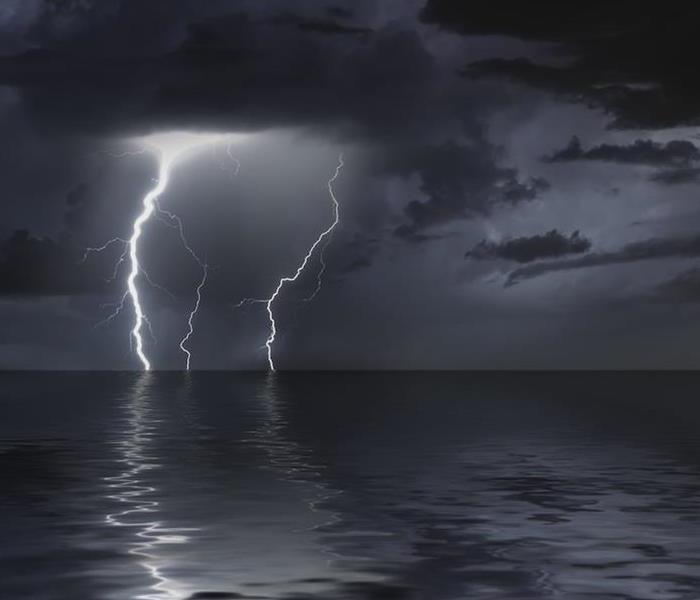Why Does Heat Lightning Happen in the Summer?
7/20/2021 (Permalink)
When the sky is hazy, as is quite typical is on warm, summer nights, the light from intense thunderstorms as far away as 100 miles can be reflected off a layer of haze and up into the night sky. And that's why you tend to see heat lightning as just a diffuse flash or flicker.
Along the Gulf Coast, we are all too familiar with sudden thunderstorms and flash-flooding.The warm weather brings heavy summer storms. Then comes the intense humidity.
Many storms seem to light up the sky without the typical “bolts” you often see. Have you ever heard someone say it’s not dangerous, it’s just “heat lightning?” Have you ever asked yourself if that’s a real thing? And if so, what exactly is it?
Well, according to the National Weather Service, heat lightning occurs when a thunderstorm is just too far away to see the actual cloud to ground strike. This means that it is just as dangerous as any other type of lightning, despite common myths to the contrary. And exactly why is lightning so dangerous? Well, according to NOAA lightning can carry anywhere from 100 million to 1 billion volts of electricity. The energy produced by lightning can heat the surrounding air to a temperature of anywhere from 18,000 degrees up to 60,000 degrees Fahrenheit! In addition to causing injuries and deaths each year, lightning also causes extensive property damage. According to the National Fire Protection Agency, there are roughly 22,000 fires started by lightning each year, totaling over $450 million in property damage.
At SERVPRO of Mobile County, we have helped many homeowners who have experienced fire damage as the result of lightning strikes. If you should ever need us, we are always just a phone call away at 251-343-0534.






 24/7 Emergency Service
24/7 Emergency Service
